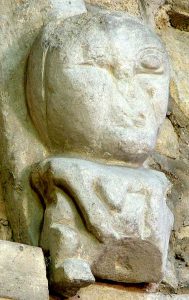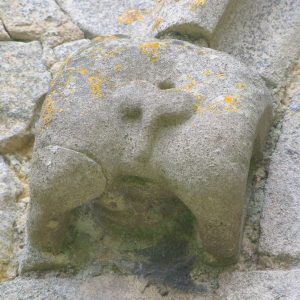Female
Marienhafe, Germany
These male and female carvings date from the 13th century and reside in the tower Museum attached to the church of St. Marien in Brookmerland, East Frisia, Germany.
Both figures are spread legged with their hands on their knees and are unequivocally exhibitionist. One curious features is that they have their heads forward on the chest. This makes them look somewhat like Blemya figures. The female has small breasts located either side of its chin. Unfortunately the male figure was only on display as a drawing and has a modest set of genitals on display.
The present day church is a brick building which replaced the original church in 1829. The museum houses a collection of friezes and other sculpture from the remains of the 1829 demolition. As you can see from the lithographs below there are definite echoes of Romanesque style in the original church which makes the presence of the two exhibitionist figures more understandable.
All photographs used with the permission of the original photographer.
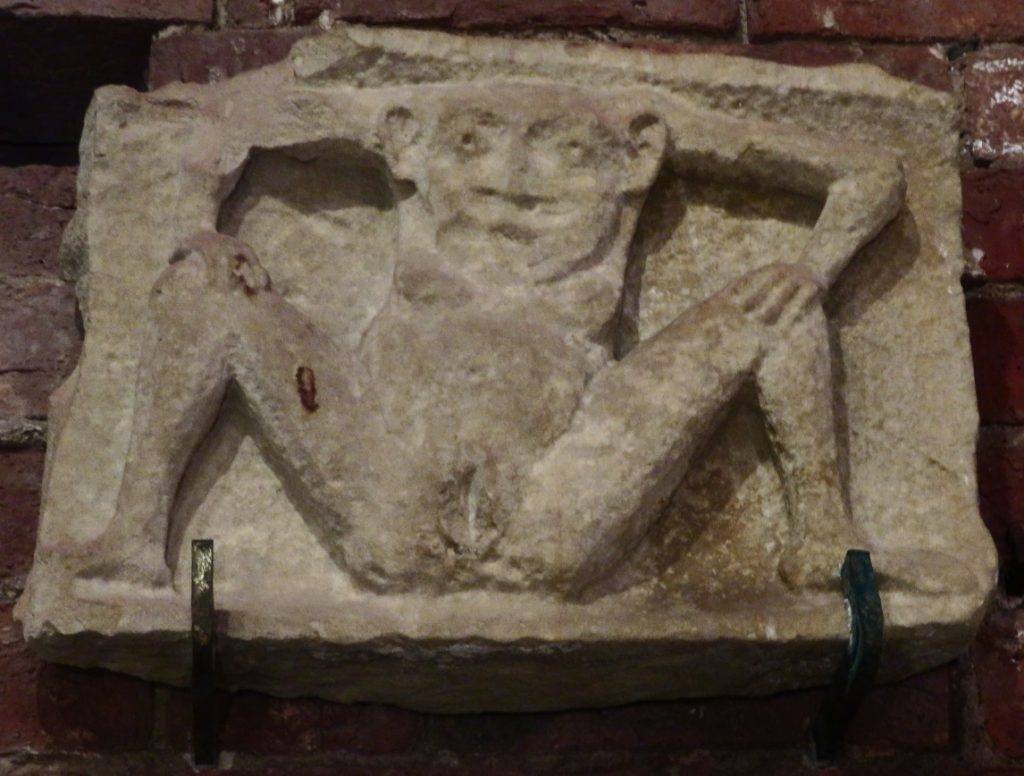
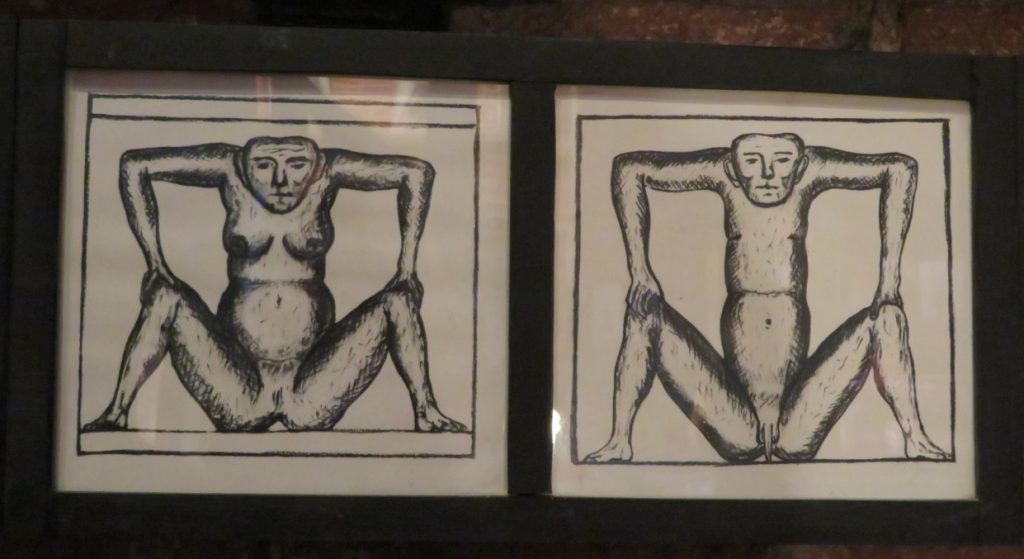
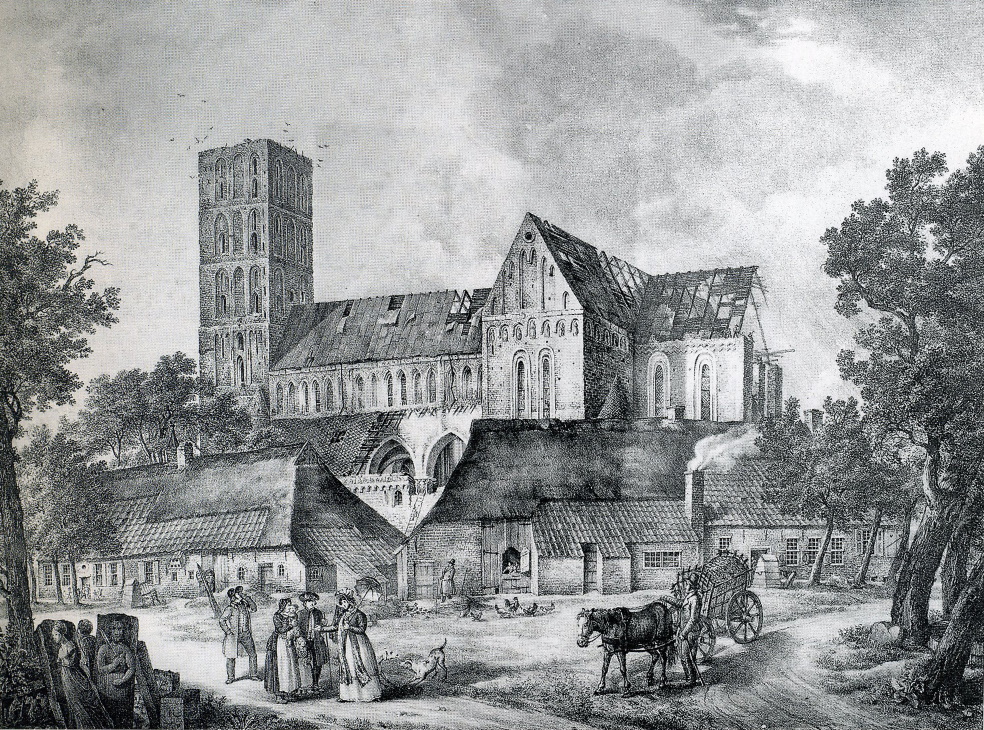
(Lithograph by D. Bendixen). There appear to remains of an older building in the middle of the image and there and some sculpture is still visible on the church. Note the sculptural gravestones in the bottom left hand corner. Image in public domain
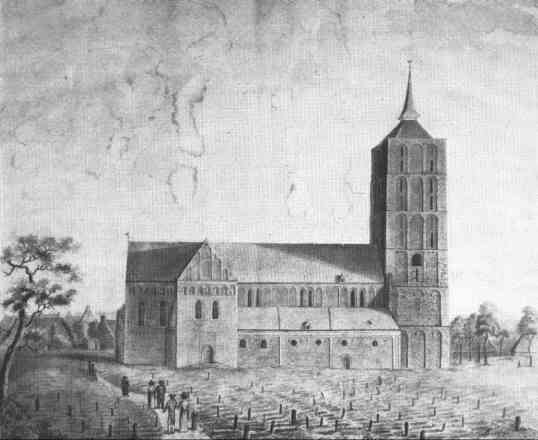
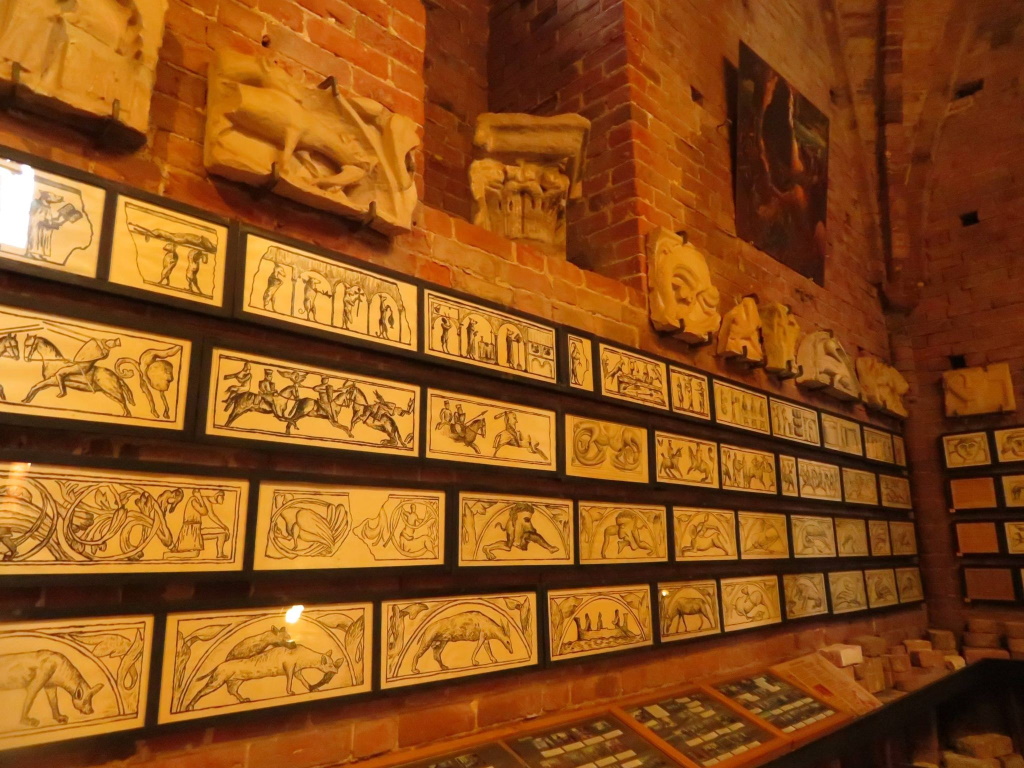
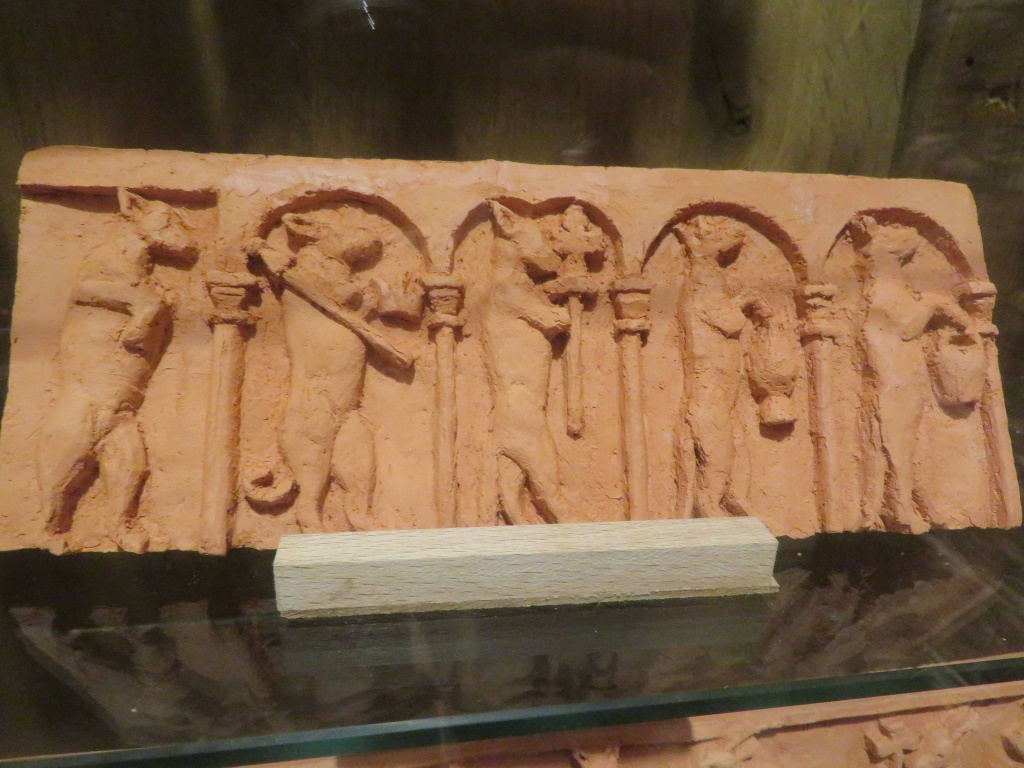
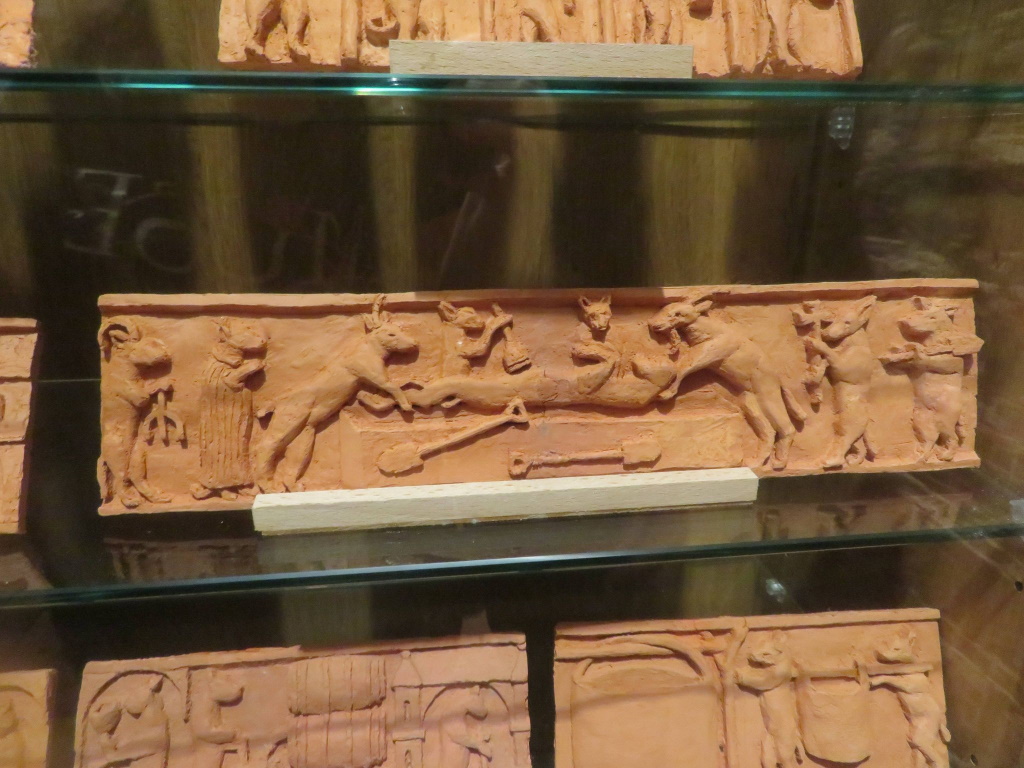
Access to the museum https://www.stoertebekerland.de/seite/372292/st%C3%B6rtebekerturm-marienhafe.html
Shepshed
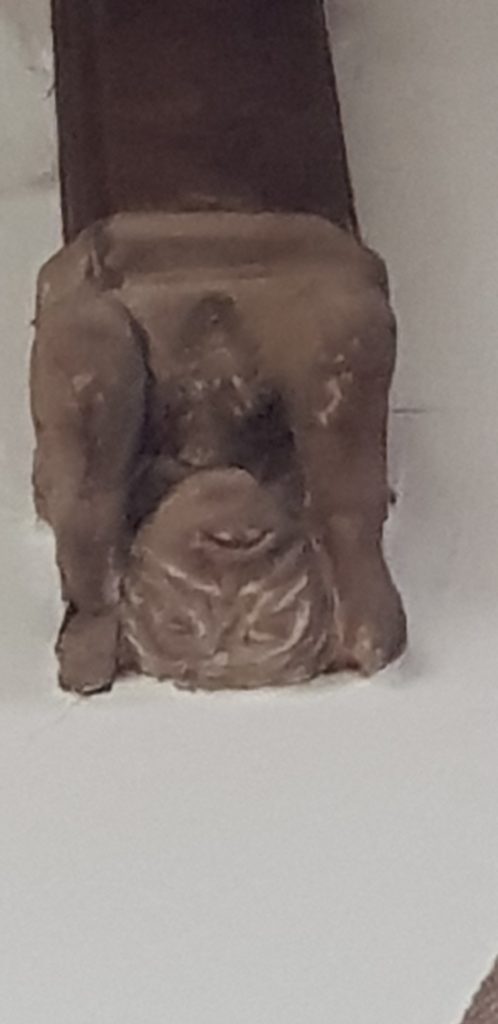
Copyright Karen Kennedy 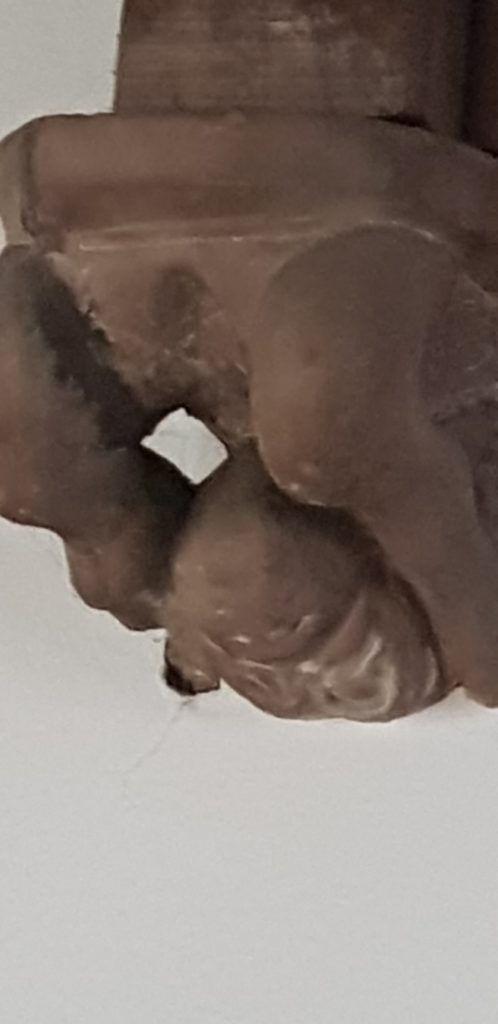
Copyright Karen Kennedy
This acrobatic figure lies inside St Botolph’s Church, Shepshed, Leicestershire. The church was founded in the 11th century. The oldest part of the church, the west tower and spire, dates from the 13th century The nave, with clerestory and aisles, and chancel date from the 15th-century. The style of the figure is hard to date but would seem to come from one of these later dates. It appears to be female but there is some damage evident that may indicate the figure was originally male.
Ballidon
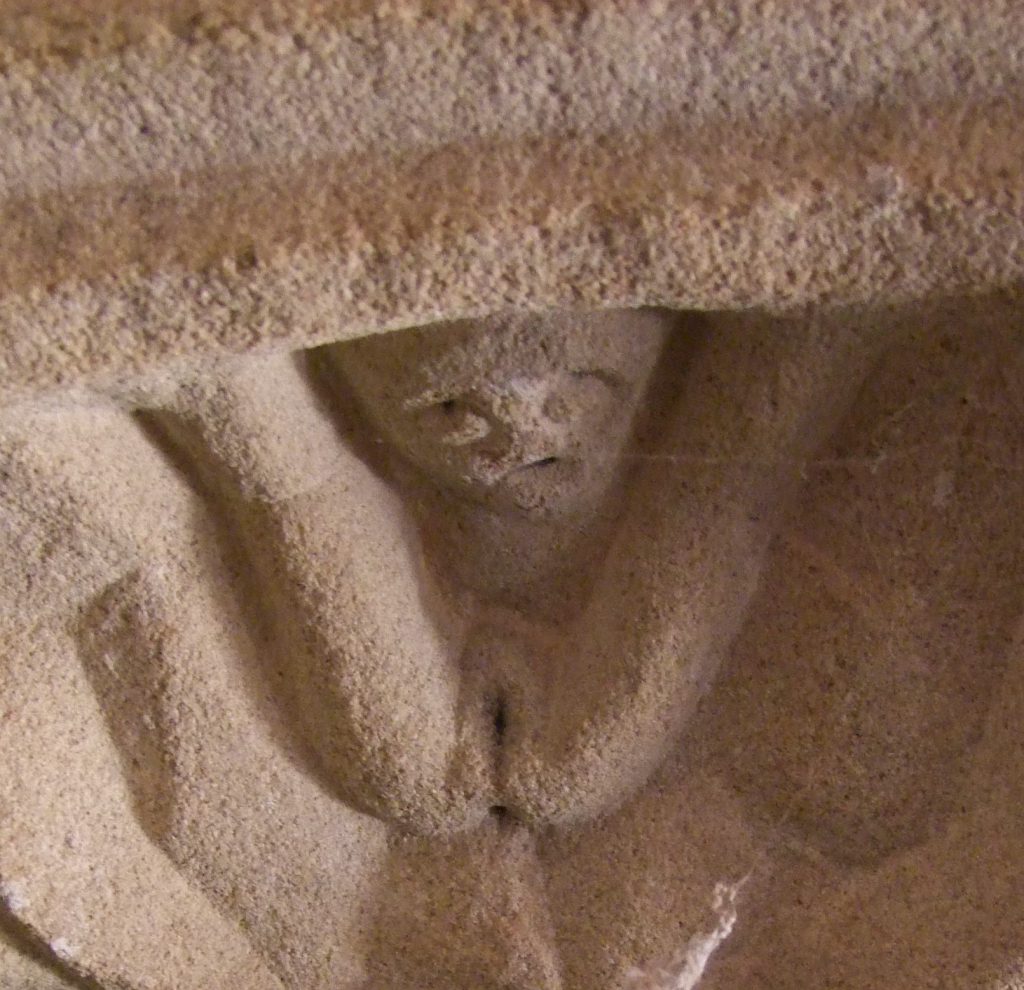
This figure can found on the underside of the font in All Saints Church, Ballidon near Ashbourne in Derbyshire. It is unequivocally a female exhibitionist which has its legs raised high in the air exposing a deeply carved vulva and also an anus. As the Friends of Friendless churches website says the building is “a church of puzzles” being a mixture of styles with the font being the most puzzling feature of all. It has been described as Tudor in style but has mixture of motifs including a muzzled beast head and the female exhibitionist figure which are Romanesque motifs from the earlier 12th century. In addition to this some of the carving is upside down and its quality is “rustic” to say the least. It has been suggested that the carving may hay the work of an apprentice trying out different styles. Thanks go to John Vigar https://www.johnevigar.com/ for the information and pictures on this figure.
The Friends of Friendless Churches – BallidonThe Derbyshire Cluster
Ballidon lies around 6 miles north from Ashbourne with its controversial exhibitionist figure, Alstonefield with its Romanesque monster eating a female exhibitionist also 6 miles or so distant to the West, the Haddon Hall sheela na gig lies 11 miles to the north along with the nearby Darley Dale anus shower . There definitely seems to be a tradition of carving exhibitonist figures in this area.
John Harding
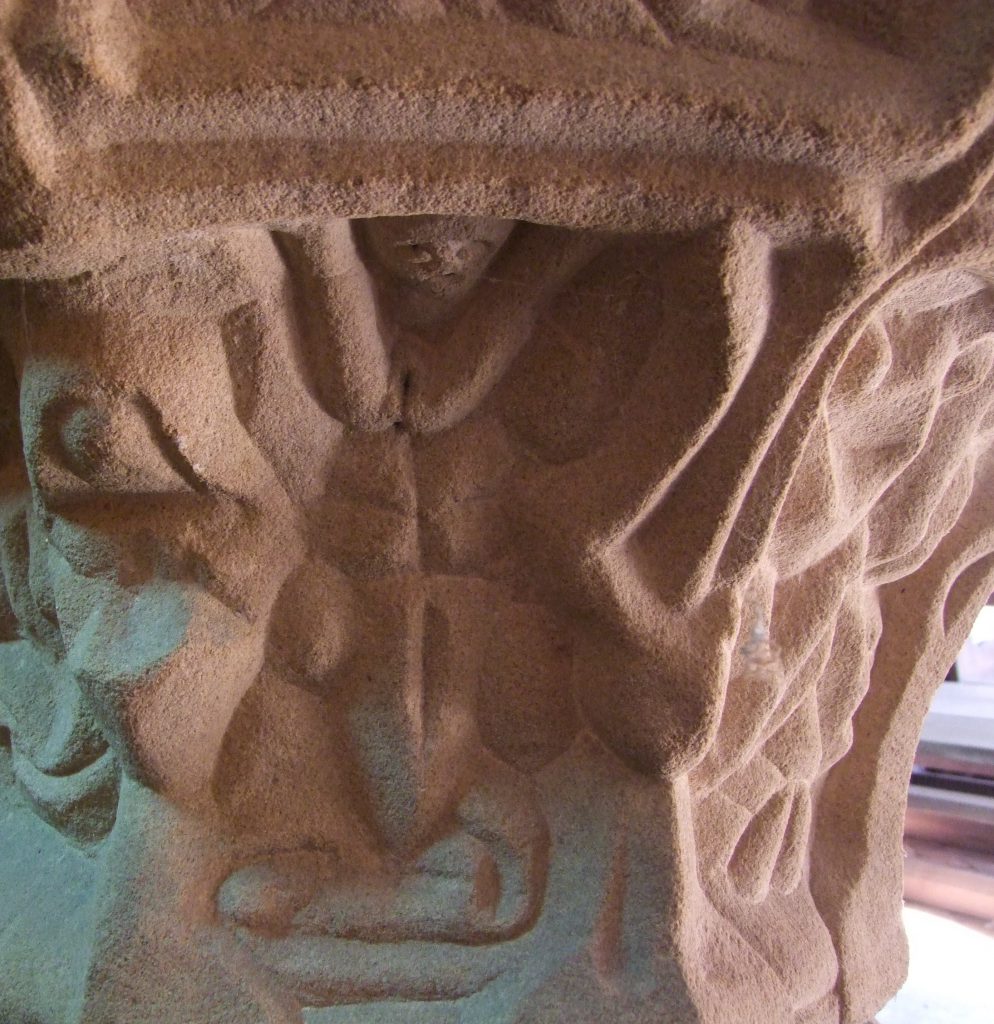
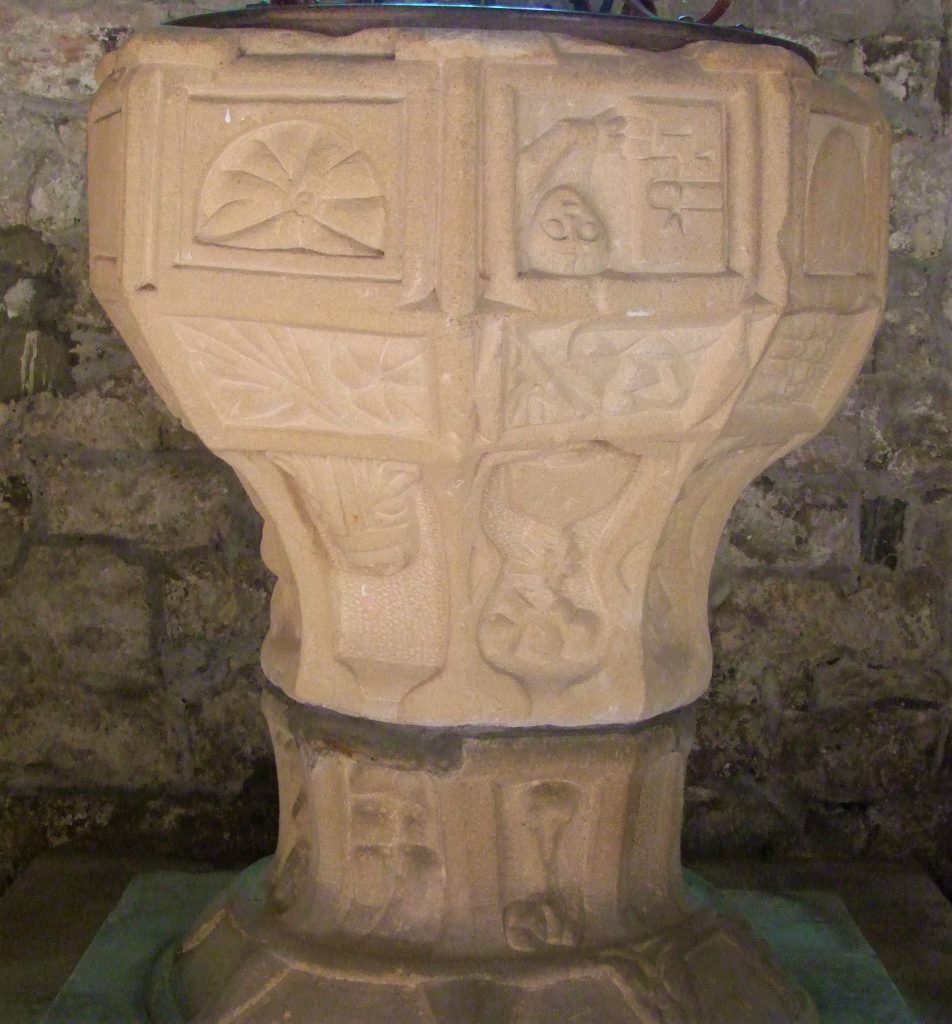
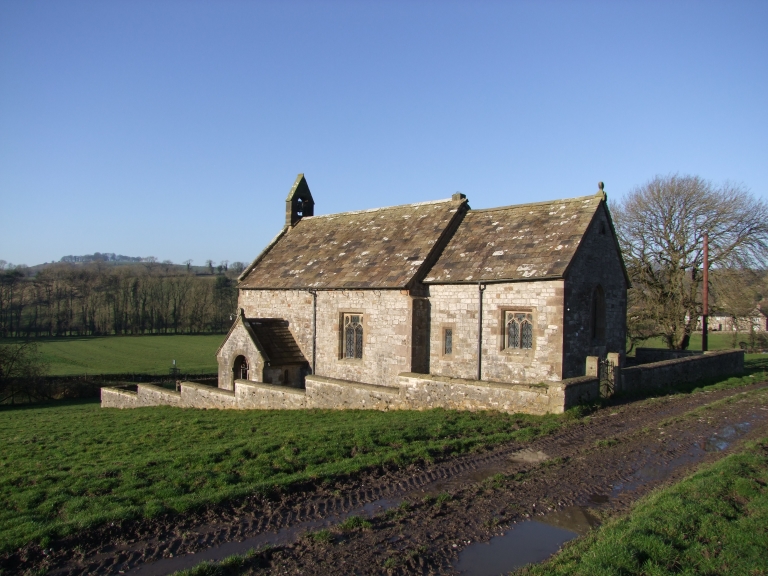
Pennington
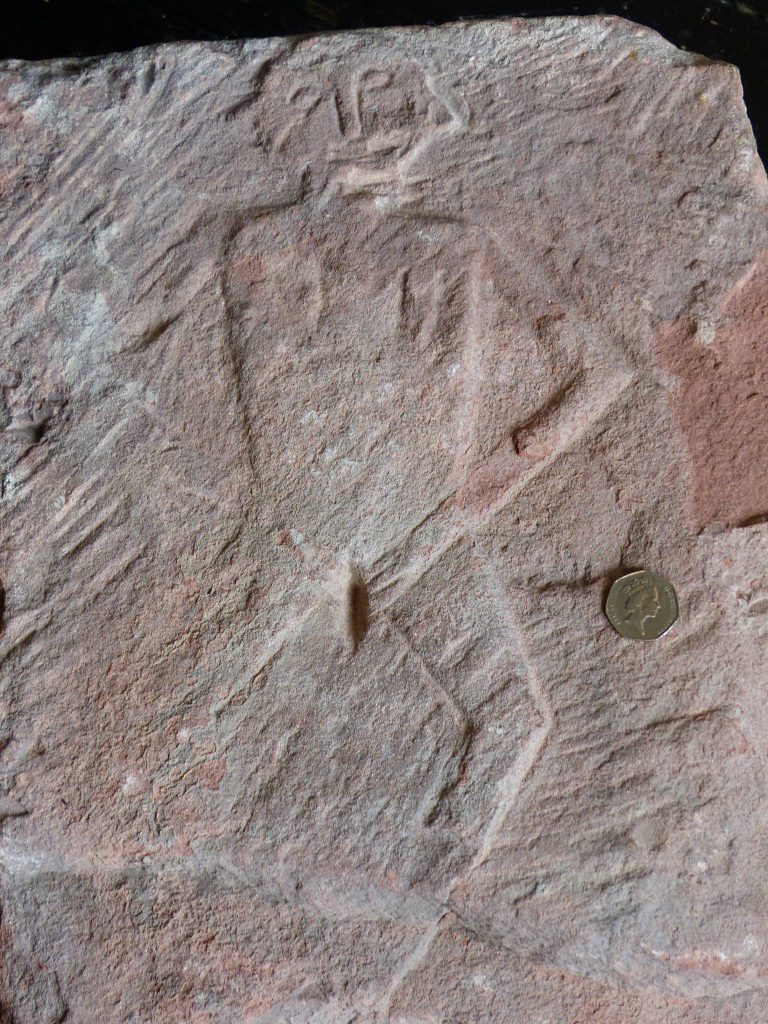
The Pennington Sheela na Gig now resides in Kendal Museum 1 .
The figure was found during a refurbishment of the church at Pennington in 1925. The current building dates from the 1826-27 after the earlier church was pulled down. There is a surviving Romanesque tympanum from the original church which is set into a wall. This has the unusual feature that it in inscribed with runes which name the founder and mason who built the church. The inscription has been said to read “Gamal built this church. Hubert the mason carved.” but this is open to debate and is not helped by the fact that the tympanum is badly weathered 2.
The Figure
The figure is fairly crudely carved in shallow relief. The left arm gestures to the deeply incised vulva while the right is mostly missing, but there is evidence that it to is gesturing in a similar manner. The remaining left hand has three carved fingers on it and there is a ghostly outline of a right had also gesturing to the vulva. It also has two crudely carved hanging breasts high on the chest. The head again crudely carved has jug ears, a long simplistic nose, two circles for eyes and appears to be smiling. One of the more primitive examples of a sheela na gig.
Freya
Richard N. Bailey in 1979 recorded this name for the figure after a conversation with a local resident. It was then published a number of years later in his article “Apotropaic Figures in Milan and North-West England” (Folklore vol 94;i 1983). This makes this one of the newer names for a figure and is probably associated with the runic inscriptions on the church tympanum.
Thanks go to Clare Heron for the use of her photographs of this figure.
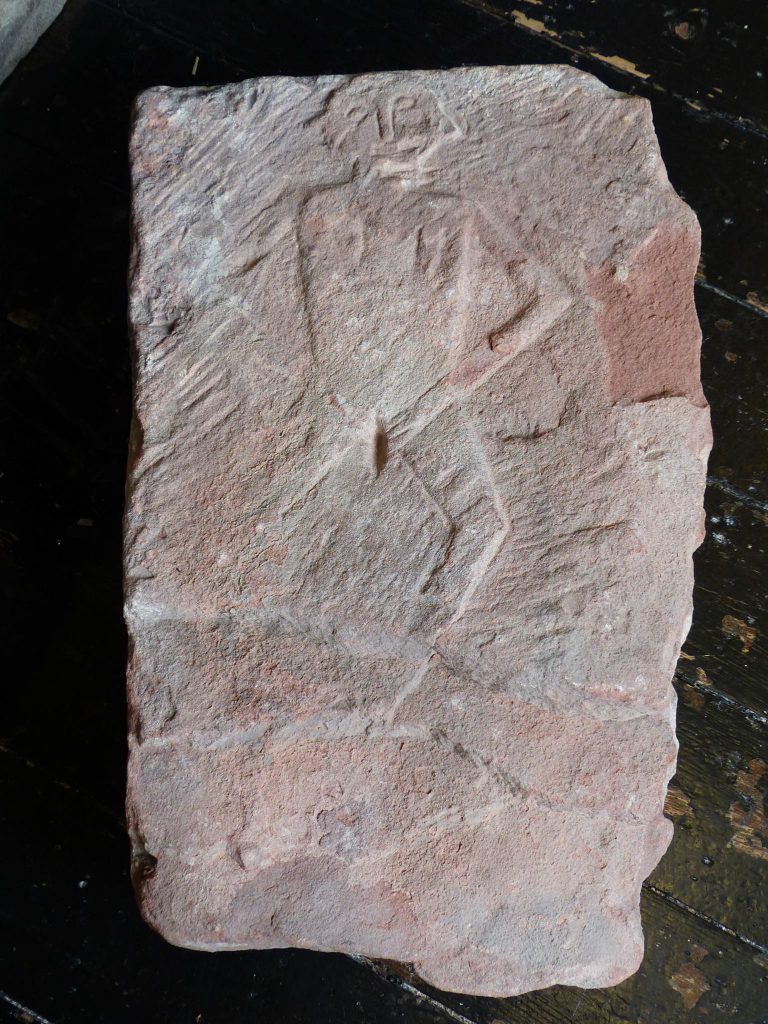
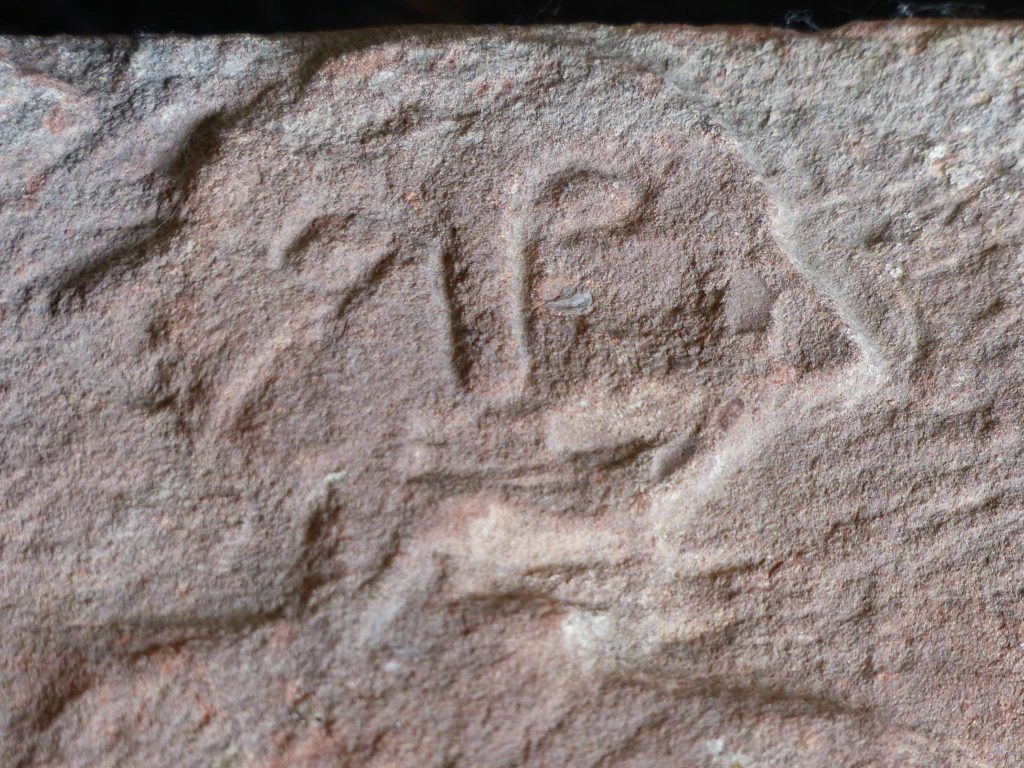
- Kendal Museum’s page on the figure http://www.kendalmuseum.org.uk/about-us/the-collections/curators-choice/sheela-na-gig
- Page 186 Runes and Runic inscriptions. Raymond Ian Page Author, David Parsons Editor.
Female Torso figures from the Rhondda Valleys
There are a number of female torso figures found in the Rhondda Wales.
Thought to be fairly modern in origin they are still an odd find.
Ashbourne
The Ashbourne Sheela Na Gig
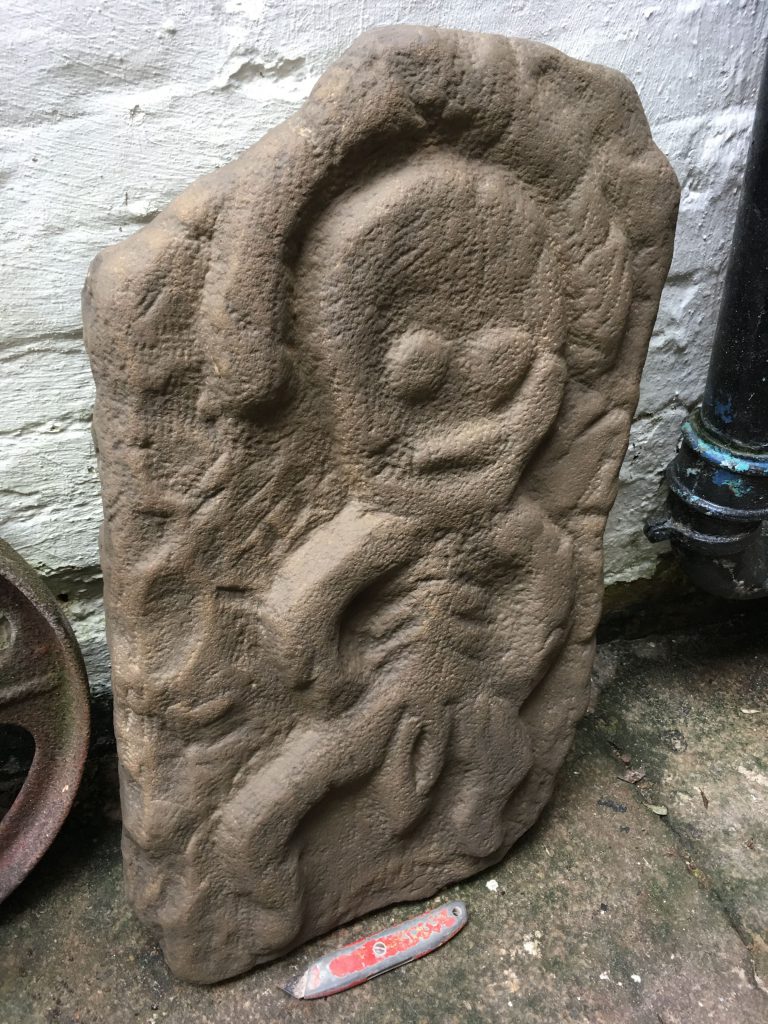
This figure was found by a builder while working on a path in Church St in the town of Ashbourne Derbyshire. It was originally put into a skip with the rest of the rubble from the path but was fortunately rescued. It was then later sold to Mr Ashley Throw of Ashbourne who realised this was both old and interesting and bought the figure with a view to conserving it.
Location of the find
The figure was dug up approximately 200 yards from the Church of St Oswald on Church St. St Oswald’s was started in 1240 by Hugh de Pateshull and replaced an earlier Saxon and possibly Norman church. A Norman crypt was discovered in 1913 and the earliest existing parts of the church are thought to date from 1160. If the figure is genuine it would seem to be a likely source for the figure.
The Figure
The figure is just over a foot wide and 28 inches tall. It is free standing and falls into the monstrous category of Sheela Na Gigs. The head is the most striking aspect with a skull like face and round protruding eyes. The right side of the jawline is pronounced while the left is missing, the mouth is indicated by a thick raised line. On the chest ribs are evident even to the point of representing a skeleton. The legs are wide apart bent at the knee with the hands resting on the thighs. An oval hangs between the legs with a deep deliberate incision. There is no way that this could be mistaken for a penis and definitely represents a vulva.
There has been much argument as to whether the figure is a genuine Sheela na Gig i.e. one dating from the 12th century or an old/modern interpretation of one. There are nearby sites which have genuine figures namely Alstonefield with its female exhibitionist being devoured by a monster. Alstonefield also has a number of unfinished (non exhibitionist) sculptures that seem to indicate that there were sculptors working in the area in the 12th century. There is then a tradition of carving female exhibitionist figures in the area. Unfortunately due to the context figure was found in and the style of the head, it is hard to make a definite decision one way or the other as to it’s absolute authenticity.
A Monstrous figure
Ireland holds a number of Sheela Na Gig figures which have a monstrous aspect. In the UK the figures generally are less so. This one is a definite exception with obvious cadaver like features.
The figure has been reported to the Portable Antiquities Scheme https://finds.org.uk/database/artefacts/record/id/838915
Location
This figure is in private possession and is not visible to the public. This figure lies less than 8 miles away from the also recently discovered Alstonefield figure
John Harding
Facelift for Ireland’s Sheela Na Gigs Website
The Ireland’s Sheela Na Gigs website has had a face lift and is better than ever.
An excellent resource for Irish Sheela Na Gigs. Give it a visit.
New Book on Sheela Na Gigs
New Book on Sheela Na Gigs due out 9th of Feburary 2017 by Starr Goode
Sheela na gig: The Dark Goddess of Sacred Power
This would seem to be exploring the Goddess theory of Sheelas.
Ms Goode’s website is at http://www.starrgoode.com/
New page on the multiple figures at Colsterworth church
New page on this interesting church with multiple exhibitionist figures.
https://sheelanagig.org/colsterworth
